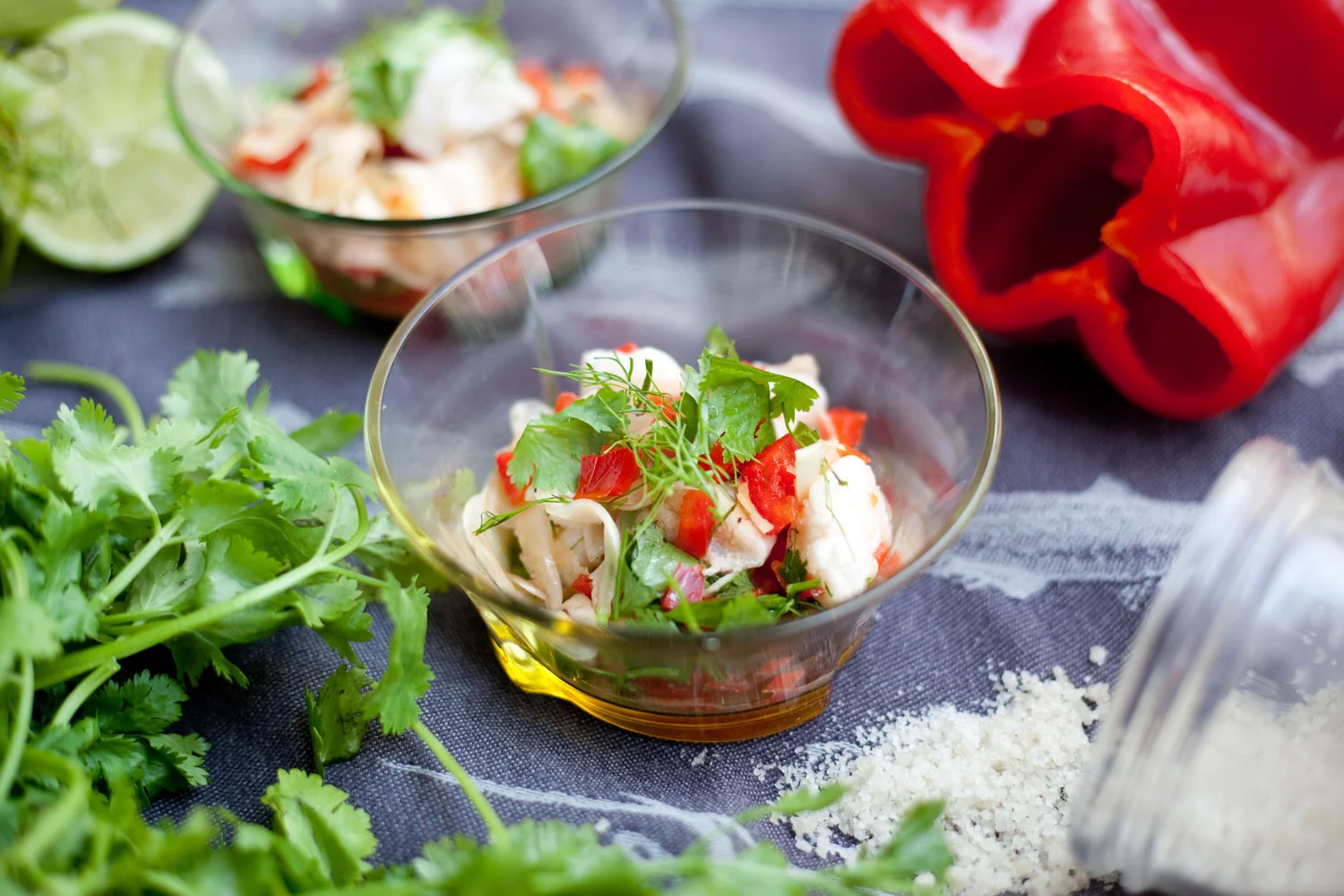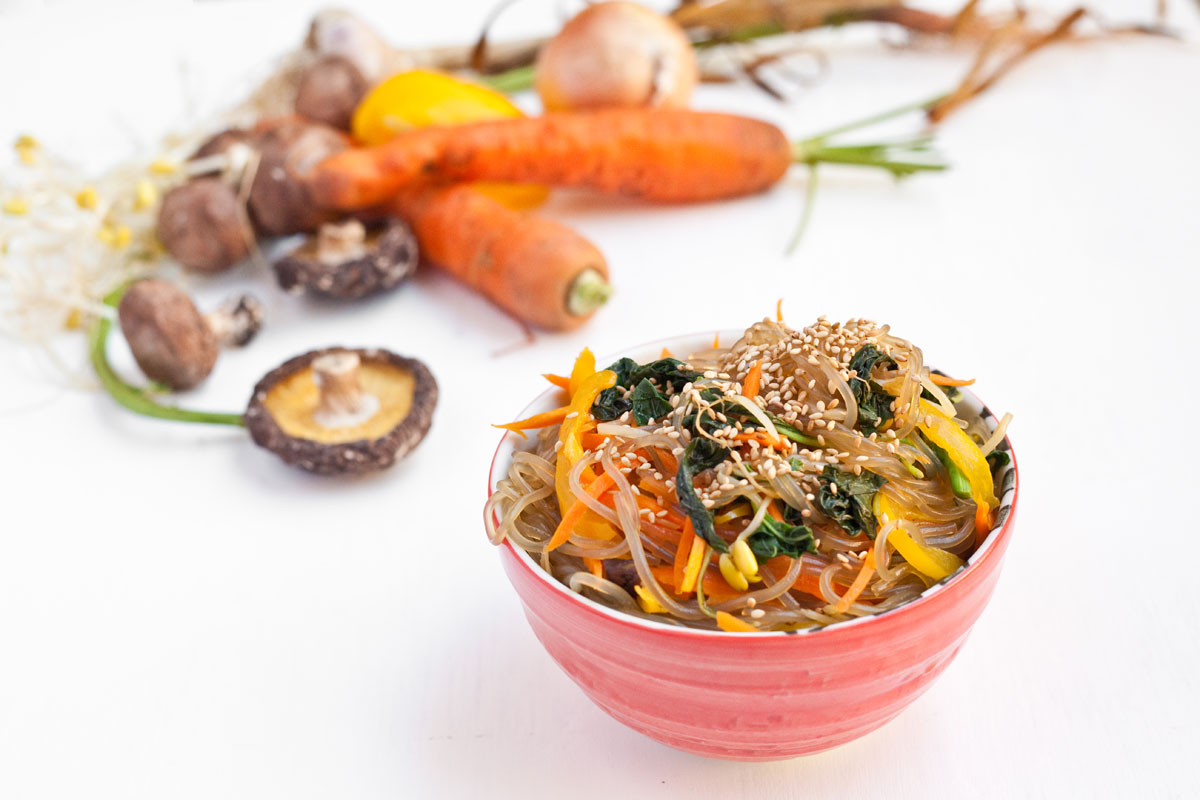Japchae (Korean Sweet Potato Noodles with Vegetables)
INGREDIENTS//Serves 4
• 200 grams (7 ounces) dangmyeon (Korean sweet potato noodles)
• 1 small onion, sliced thinly
• 1 carrot, julienned
• 1 pepper (red, yellow, or orange), sliced thinly
• 3-4 shiitake mushrooms, dried or 100 grams small white "button" mushrooms (aka champignon de Paris in France), sliced thinly
• 100 grams of bean sprouts
• 100 grams fresh spinach
• 1-2 cloves garlic, minced
• 1 egg, whole (optional, opt-out if going the vegan route)
• 1-2 tablespoons sesame seeds
Sauce
• 4 tablespoons soy sauce or tamari (gluten-free option)
• 1 1/2 tablespoon honey or 1 tablespoon brown sugar (vegan option)
• 1 tablespoon sesame oil
• 1/2 teaspoon black pepper
PREPARTION
If using dried shiitake mushrooms, you need to soak them at least a few hours (I soak them in the morning for evening use) in advance in room temperature water. Put them in a bowl of water and swish them around with the stem side down. Once they are plumped up and soft, give them a squeeze and set them aside for later use.
Slice and julienne all your vegetables: the mandoline comes in handy.
For the egg topping, seperate your egg yolk and white. Fry them up seperately in a pan and then slice it up into matchstick pieces.
INSTRUCTIONS
Prepare your sauce and rinse all your vegetables.
Bring a large pot of water to boil and then add your dangmyeon. Follow the instuctions on the back for the time. It's usually around 5-7 minutes.
During this time, marinate your mushrooms in one tablespoon of the prepared sauce.
Transfer the cooked noodles to a colander and rinse under cold water, drain, and put them in a large mixing bowl.
Rinse out your pot, add water and bring it to a boil in order to blanche your spinach and your bean sprouts at the same time. Basically you want to boil your spinach and your bean sprouts for a short amount of time (1-2 minutes), then quickly rinse it under cold water.
In a seperate bowl, add the minced garlic and sea salt. Squeeze out the remaining water from the spinach and the bean sprouts and rub it into the garlic and sea salt. Let it sit.
In a single medium size pan, add some cooking oil to stir fry your vegetables seperately in this order: onion, pepper, carrot, and mushrooms.
Transfer each ingredient after it's cooked to a bowl set aside. The vegetables should not be cooked until limp. It's nice when they keep their color and still have a slight crunch to them. So keep the cook time short.
Add the prepared sauce into the mixing bowl with the noodles and stir in all your cooked ingredients.
Garnish with lots of sesame seeds and your egg toppings (optional).
NOTE
I picked up an organic basket of veggies this week and I had a stalk of amaranth included in it. I have only purchased the grains in the past so I didn't even know what the plant resembled. It had some leafy greens on it, so I plucked them off and used it in place of the spinach. It was a great substitution.
You can also add beef to this dish: slice up your beef, marinate it with prepared sauce in the same bowl with the mushrooms, and stir fry it together.
This is a dish that can be eaten cold, at room temperature, or hot. If you want it hot, simply place all the ingredients back into the pan to heat up before serving.















































